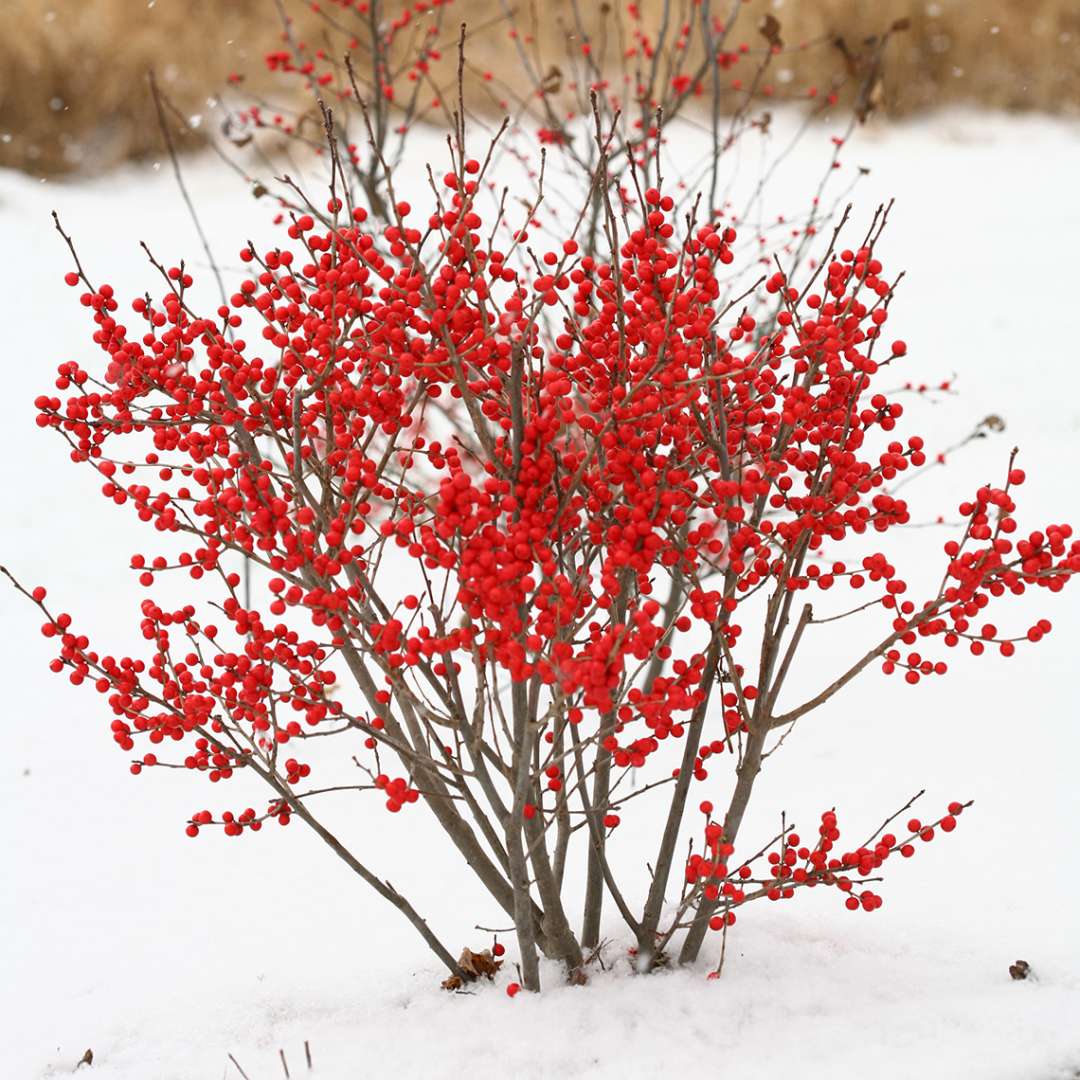December 2021
It’s December and we have come to the final plant for our 2021 Featured Plant blog series! We have absolutely loved bringing these blog posts to you each month to share some of our most favorite plants with you. We’ve loved it so much that we’ll be continuing this series into 2022! So while we may be wrapping up for this year, you’ll find us right here again next month, bringing you more of the best plant selections we can find!

For this month, we’re going with a special variety of one of our favorite native plants, the winterberry holly (Ilex verticillata). But before we get into the specifics of the Berry Poppins® Winterberry, let’s chat about winterberry holly basics.
Winterberry hollies are most highly valued for the gorgeous display of bright berries they show off after their leaves have dropped in the fall. These berries are usually red but there are some white to creamy yellow varieties available as well. Either way, red, white, or yellow… these clusters of berries showing out on their bare stems through the winter are totally dreamy for this time of year, giving us all of the winter holiday vibes in our yard without even having to decorate!
RELATED POST: Landscape Tips for the Coldest Winter Days


Do you remember when we covered the Chinese pistache tree in October of 2021? There we discussed how some plants have both male and female reproductive parts on the same plant (called monoecious) and some plants have separate male and female plants (called dioecious). Just like the pistache tree, the winterberry holly is dioecious – some plants are only female and some are only male! Only female reproductive parts on any plant can produce fruits and berries on any plant but you must have a male plant nearby the have fruit production. Our selected variety, Berry Poppins®, is a female and breeders have developed her perfect male companion, Mr. Poppins®! Make sure that you pick up at least one Mr. Poppins® for every 3-5 Berry Poppins® and you have them planted within 50 feet of each other to ensure good berry production on the female plants.
RELATED: Caring for Poinsettias During and After the Holidays
During the warmer months, winterberries fill out nicely with dark green leaves and make a great backdrop or border shrub that allows other summer bloomers to show off. They will bloom during the spring and early summer but the flowers aren’t showy. You may not notice them but the bees and other pollinators will find their way to them! Winterberry hollies are native to the east coast of North America, from the southern regions of Canada south to northern Alabama and Georgia. They provide great nesting habitat and food resources for many songbirds.

Finally, we love Berry Poppins® because of its compact size. Most winterberry hollies can reach 6-10 feet tall and 5-8 feet wide while Berry Poppins® stays smaller for the average landscape, only reaching 4-5 feet tall and wide. Having smaller varieties of these great native plants really allows us to bring super beneficial plants into small to medium sized suburban landscapes where spaces may be more limited.
RELATED: Featured Plant: Arctic Fire ® Red Twig Dogwood

Growing Details
Height: 4-5 feet
Width: 4-5 feet
Sunlight: Full sun to part sun (better berry production in full sun)
Growing Zones: 3-9
Soil Moisture: Likes moist soils, does not tolerate drought well, good plant for areas that collect water or for use in a rain garden
Pruning: Only prune to remove dead or broken branches, to correct structural issues, or to remove disease
BONUS:
Cut stems make amazing additions to planters or floral arrangements for the indoors or outdoors throughout the year! Want some ideas on holiday arrangements and decorations you can create with the plants in your own yard? Get our FREE Holiday Greenery Guide!





